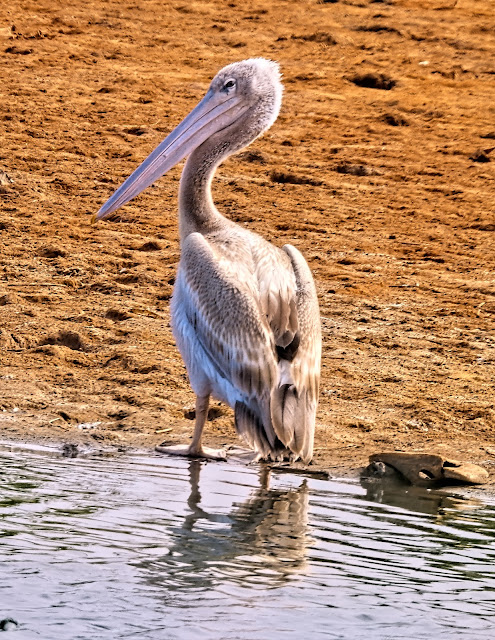This Blog contains Wildlife and Bird Photos from Walks, Safaris, Birding Trips and Vacations. Most of the pictures have been taken with my Nikon P900 and P950X cameras. On the right of the page are labels for each species of Bird/Animal etc. Click on a label to show all of the photos taken for that species. Information for each species is from Wikipedia. Just click on any image for a large picture.
TOTAL PAGEVIEWS
TRANSLATE
Thursday, 29 December 2022
28-12-2022 NGALA LODGE, GAMBIA - BEAUTIFUL SUNBIRD (FEMALE) (Cinnyris pulchellus)
The beautiful sunbird (Cinnyris pulchella), formerly placed in the genus Nectarinia, is a sunbird. It is native to tropical Africa, its range extending from Senegal and Guinea in the west to Sudan, South Sudan, Ethiopia, Tanzania and Kenya in the east.
Beautiful sunbirds are tiny, only 10 cm (4 in) long, although the breeding male's long tail adds another 5 cm (2 in). They have medium-length thin down-curved bills and brush-tipped tubular tongues, both of which are adaptations to their nectar feeding. The male has a black head, bright metallic green upper parts, scarlet breast bordered with yellow and black belly. The central feathers of the teal are greatly elongated. The female is brown above with yellowish underparts.
Wednesday, 28 December 2022
27-12-2022 CALYPSO BAR, GAMBIA - AFRICAN DARTER (Anhinga rufa)
The African darter (Anhinga rufa), sometimes called the snakebird, is a water bird of sub-Saharan Africa and Iraq.
The African darter is a member of the darter family, Anhingidae, and is closely related to American (Anhinga anhinga), Oriental (Anhinga melanogaster), and Australasian (Anhinga novaehollandiae) darters.
The African darter is 80 cm (31 in) long. Like other anhingas, it has a very long neck. The male is mainly glossy black with white streaking; females and immature birds are browner. The African darter differs in appearance from the American darter most recognisably by its thin white lateral neck stripe against a rufous background colour. The pointed bill prevents confusion with cormorants.
Subscribe to:
Posts (Atom)







%201.jpg)
%201.jpg)
%202.jpg)





%203.jpg)

































